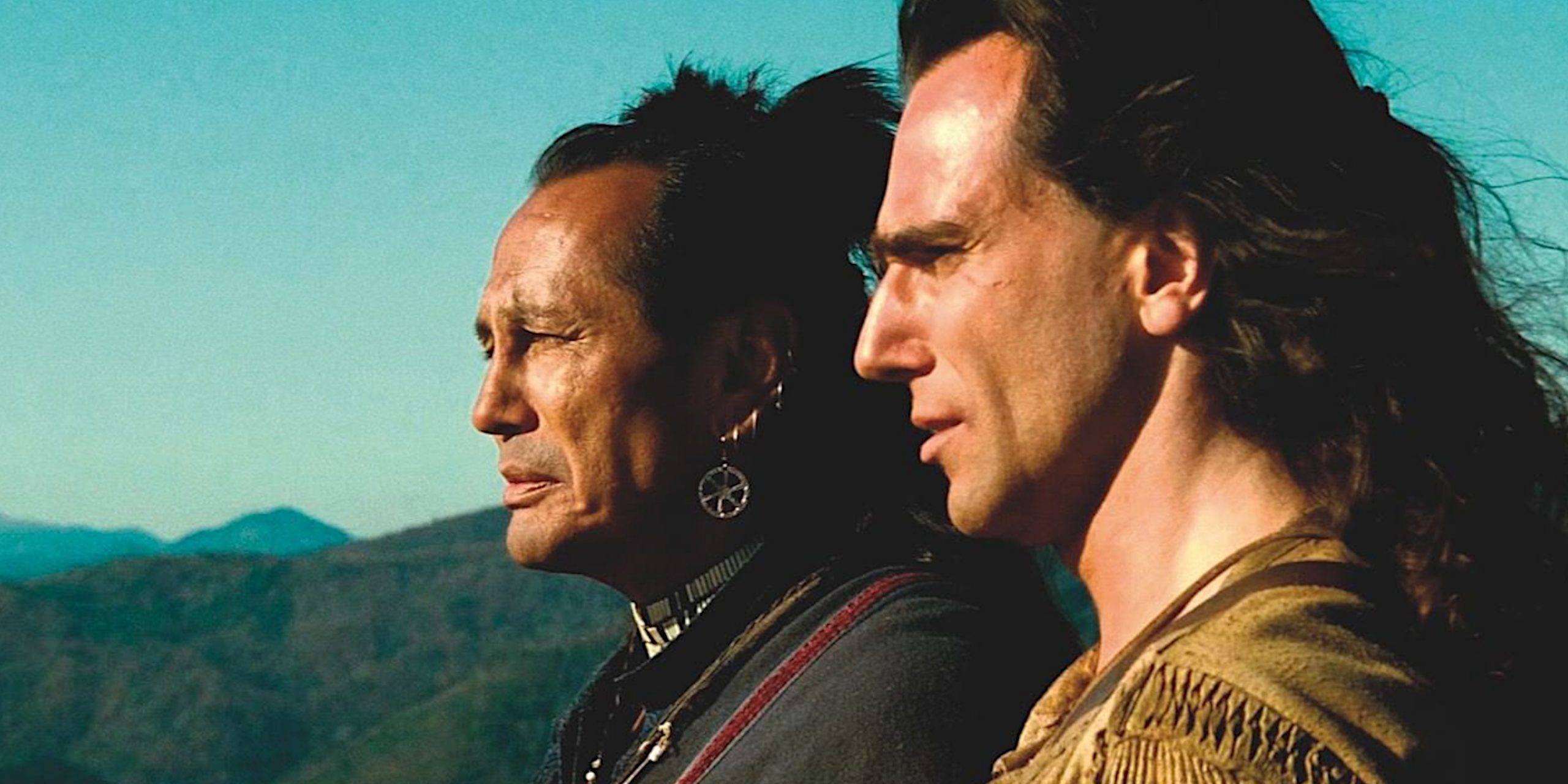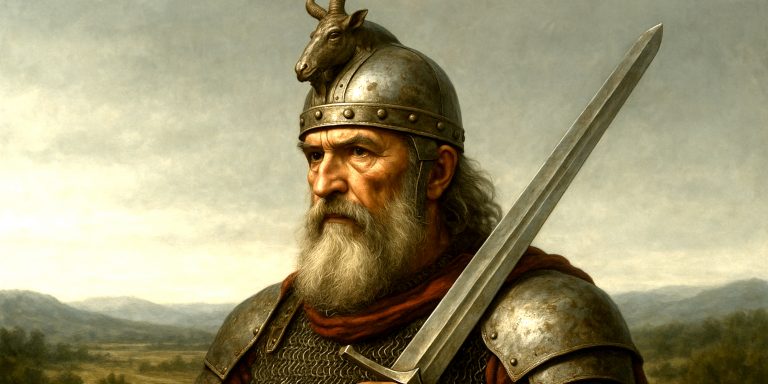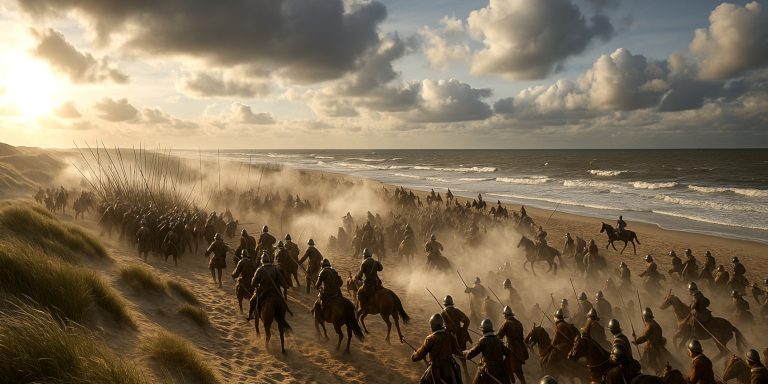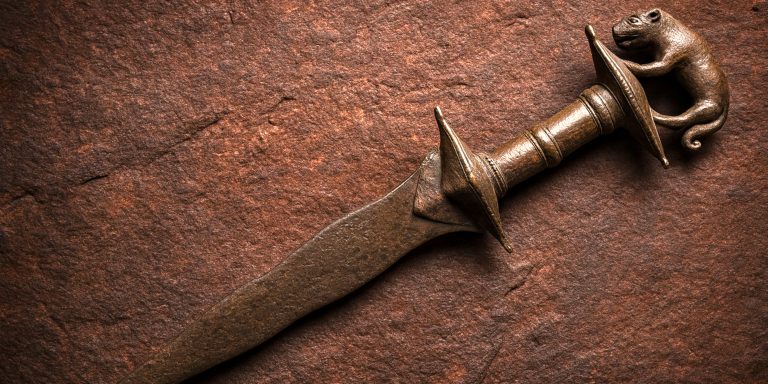
Michael Mann’s The Last of the Mohicans (1992) has never really left the cultural bloodstream. Based on James Fenimore Cooper’s novel, it is set during the French and Indian War and throws together romance, wilderness survival, and bloody frontier combat. The film lingers in the mind because it is not just an adventure: it is a tragedy about people and cultures being swept away.
And while the story is sweeping, the details matter too, especially the weapons. Muskets, sabres, and tomahawks are as important as dialogue in telling this story.
The Setting: The French and Indian War
The film takes place in the 1750s during the French and Indian War, when Britain and France fought for control of North America. Native tribes joined both sides, some lured by trade, others by the hope of protecting their land. It was a messy conflict with formal European line battles clashing against guerrilla ambushes in forests and ravines.
Story in Brief
The adopted Mohican Hawkeye, along with Chingachgook and his son Uncas, becomes protector to Cora and Alice Munro, daughters of a British officer. Their journey through contested land brings them into conflict with Magua, a Huron warrior allied with the French. The result is a tale of loyalty, betrayal, and sacrifice that ends in tragedy on a windswept cliff.
Weapons and Warfare
The film’s action is built on the clash of three worlds.
- British: Brown Bess muskets, bayonets, and officer sabres.
- French: Charleville muskets, artillery, and elegant smallswords.
- Native Americans: Tomahawks, bows, war clubs, and captured muskets.
This mix of weapons underlines the themes: rigid European formality colliding with the adaptability and ferocity of Native warfare.
Character Breakdown
Hawkeye (Nathaniel Poe)
- Weapon of Choice: Long rifle and tomahawk.
- Symbolism: A man between worlds. Though of European descent, he is raised Mohican and embodies both accuracy of the rifle and the brutality of close combat. His long rifle symbolises precision, independence, and a refusal to fight in rigid European lines.
- Role in the Story: Protector, lover, and bridge between cultures. His bond with Cora represents the possibility of something new emerging from the old world’s collapse.
Chingachgook
- Weapon of Choice: War club and tomahawk.
- Symbolism: Tradition and resilience. Chingachgook’s heavy war club is not just a weapon but an inheritance, tying him to centuries of Native combat. It embodies strength, rootedness, and inevitability.
- Role in the Story: The elder statesman and moral compass. In the final act, he avenges his son with devastating force, reminding us why the Mohicans were once feared warriors.
Uncas
- Weapon of Choice: Musket and knife.
- Symbolism: Hope for continuity. Uncas is young, skilled, and represents the survival of his people — until his tragic death ends that line. His musket reflects a generation forced to adopt European weapons yet fighting for Native causes.
- Role in the Story: The heir who never gets to inherit. His doomed romance with Alice underscores the futility of trying to preserve a world already slipping away.
Cora Munro
- Weapon of Choice: None, though her defiance is her weapon.
- Symbolism: Courage against inevitability. Cora is strong-willed, practical, and not content to be a passive pawn in her father’s war.
- Role in the Story: The heart of the film’s romance. Her love for Hawkeye is a rebellion against both her father’s authority and the rigid British order.
Alice Munro
- Weapon of Choice: None, vulnerability is her defining trait.
- Symbolism: Innocence crushed by war. Alice is fragile, overshadowed by her sister, and her fate — jumping to her death after Uncas, is one of the most haunting images in the film.
- Role in the Story: A reminder that in war, the innocent are destroyed alongside the warriors.
Magua
- Weapon of Choice: Tomahawk and knife.
- Symbolism: Revenge and betrayal. Magua is driven by personal vengeance against Colonel Munro, and his weapons reflect his ruthlessness, fast, brutal, and intimate.
- Role in the Story: He is the shadow of Hawkeye: another man caught between cultures, but twisted by rage. His ambition and savagery embody the cost of colonial wars on Native people.
Themes and Accuracy
The film is not strictly accurate, but it is true to the spirit of the conflict. It shows how European powers treated Native tribes as expendable allies, how frontier warfare was anything but civilised, and how individuals were crushed under the weight of empire. The weapons themselves underline the divide: the rigid musket volleys of the British are shown as hopeless in ambushes, while the tomahawk and rifle prove more adaptable.
Why It Still Shines
The Last of the Mohicans remains compelling because it refuses to be tidy. It is romantic but tragic, violent but lyrical. Trevor Jones’ score still raises the hairs on the back of your neck, and the final cliff-top sequence is as devastating as it is beautiful.
The Seven Swords Takeaway
To explain The Last of the Mohicans is to acknowledge its contradictions: history rewritten as myth, characters larger than life yet grounded in brutal reality, and weapons that do as much storytelling as the script. It is both a sweeping epic and an intimate tragedy. And it shows, better than most films, how a musket, a tomahawk, and a war club can all tell us who lives, who dies, and who is remembered.
Watch the trailer:



